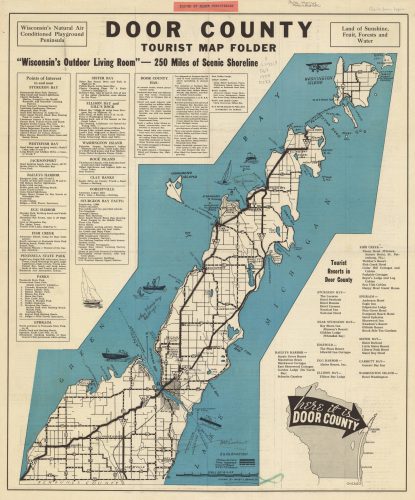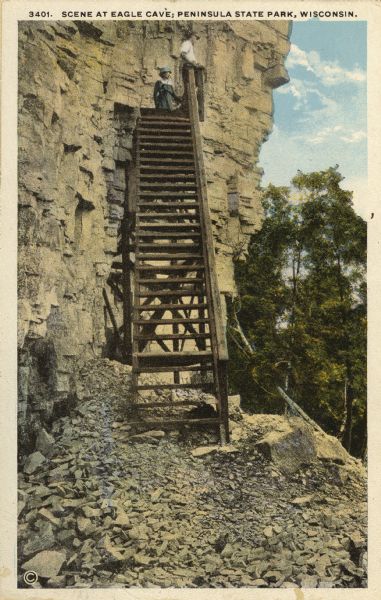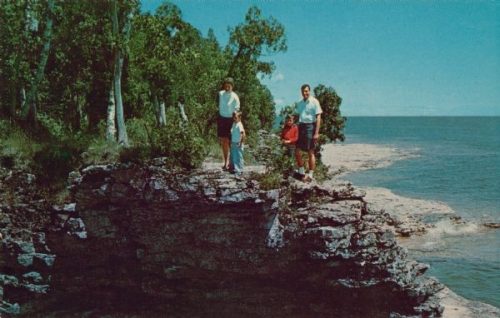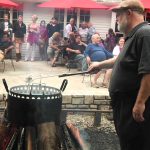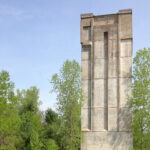In the present day, the Door County tourism industry brings in over $500 million in total economic impact every year, with the summer as peak season. Rising from humble beginnings, and getting some help along the way from innovation, mainly the rise of cars, Door County has earned the nickname “The Cape Cod of the Midwest.” Beautiful scenery coupled with no lack of things to do makes Door County the ideal place for a summer vacation.
The roots of the Door County tourism industry can be traced to the 1850s with the opening of the Thorp Hotel in Fish Creek. The hotel’s initial audience included those passing through the peninsula, such as ship crews, salesmen, and laborers, but eventually became a destination in and of itself as visitors returned to vacation. The community of Fish Creek lies about 30 minutes north of the City of Sturgeon Bay, so people made the return because of the area’s beauty and the escape into nature they sought.
By the beginning of the twentieth century, tourism on the peninsula had increased, with many visitors mainly from Milwaukee and Chicago, who traveled to Door County aboard increasingly convenient modes of transportation. Beginning in the 1850s, steamer ships became the most popular form of travel between cities on the shores of Lake Michigan. In 1914, a railway, the “Door County Special,” began transporting passengers from Green Bay to Sturgeon Bay. This line enabled people to train from places like Chicago and Milwaukee to the station at Green Bay, and then take a direct line to Sturgeon Bay. Before cars gained mainstream usage, horse carriages often carried visitors further north from Sturgeon Bay. As the automobiles became more affordable for the middle class in the 1920s, it became a popular way to travel, resulting in the expansion of local highways throughout the region.
Since its inception as a tourist destination, Door County’s natural beauty has remained central, supported by the establishment of many state parks throughout the peninsula. The first, Peninsula State Park gained recognition from the state in 1909, and became a popular camping ground among visitors. In the present day it sees many visitors who are looking to camp, hike, play golf, enjoy the waterfront access, and more.
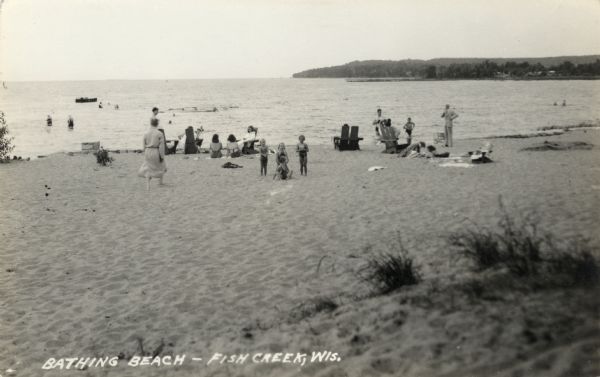
The 1920s began a new era in Door County, as the production of cherries was popularized as a tourism industry that has since established itself as a central feature of the area’s image (see Cherryland Tourism). Door County became the number one exporter of cherries in the United States, and led to an uptick in tourism numbers. Marketing materials, like postcards, and events like the annual Cherry Blossom Festival in Sturgeon Bay bolstered the Cherryland image and drew in more visitors than ever before. In 1928, Sturgeon Bay opened the Door County Cherryland Airport, further establishing the importance of cherries to their culture.
The 1930s saw an emergence of the arts as a draw for tourists. The most prominent troupe of artists, the Peninsula Players, still operates in the current day. They held their first performance in 1935, and immediately began to receive national praise and attention for their work. Their first show, Noel Coward’s Hay Fever, debuted in Fish Creek. Their early success laid the foundation for other theater troupes, and the proceeds from their shows earned them the funds to purchase the Wildwood Boys Camp in 1937, which is where they still hold shows in the present.
A defining point in the history of Door County and its relevance on a national stage occurred in 1969 when National Geographic ran a 30-page story on Door County’s natural beauty. The wide distribution of this publication and the magazine’s esteem encouraged people to both visit the area during the summer months or even move to the peninsula full-time. Further, the steady increase in tourism led to the creation of the Sturgeon Bay Businessman’s Association in 1984, a group aimed at bringing together all of the towns on the peninsula to better establish tourism as an economic tool.
Written by Jack Cultra, April 2024.
Sources
Dannhausen, Myles, Jr. and Patty Williamson. “The Rise and Fall of the Ahnapee & Western Railway.” Door County Pulse, 15 Nov. 2011. https://www.doorcountypulse.com/the-rise-and-fall-of-the-ahnapee-western-railway/ (Accessed 5 May 2023).
Destination Door County. “The Early Days of Tourism in Door County.” Newsletter. 1 January 2021. https://www.doorcounty.com/newsletter/january-2021/the-early-days-of-tourism-in-door-county (Accessed 25 March 2023).
Destination Door County. “The History of Door County Tourism.” YouTube, 11 Nov. 2019, www.youtube.com/watch?v=EHgqbLk50EY. (Accessed 14 June 2023).
Ellis, William S. “Wisconsin’s Door Peninsula: A Kingdom so Delicious,” National Geographic, March 1969.
Holand, Hjalmar Rued. History of Door County, Wisconsin: The County Beautiful. Chicago: S.J. Clarke Publishing Co.,1917.
Tourism Economics. “Economic Impact of Tourism in Door County.” Report prepared for Destination Door County, June 2022. https://www.doorcounty.com/getmedia/f434dcd2-fe7b-4eb2-9487-a705ec10c3c6/economic-impact-of-tourism-in-door-county-2022-web.pdf
